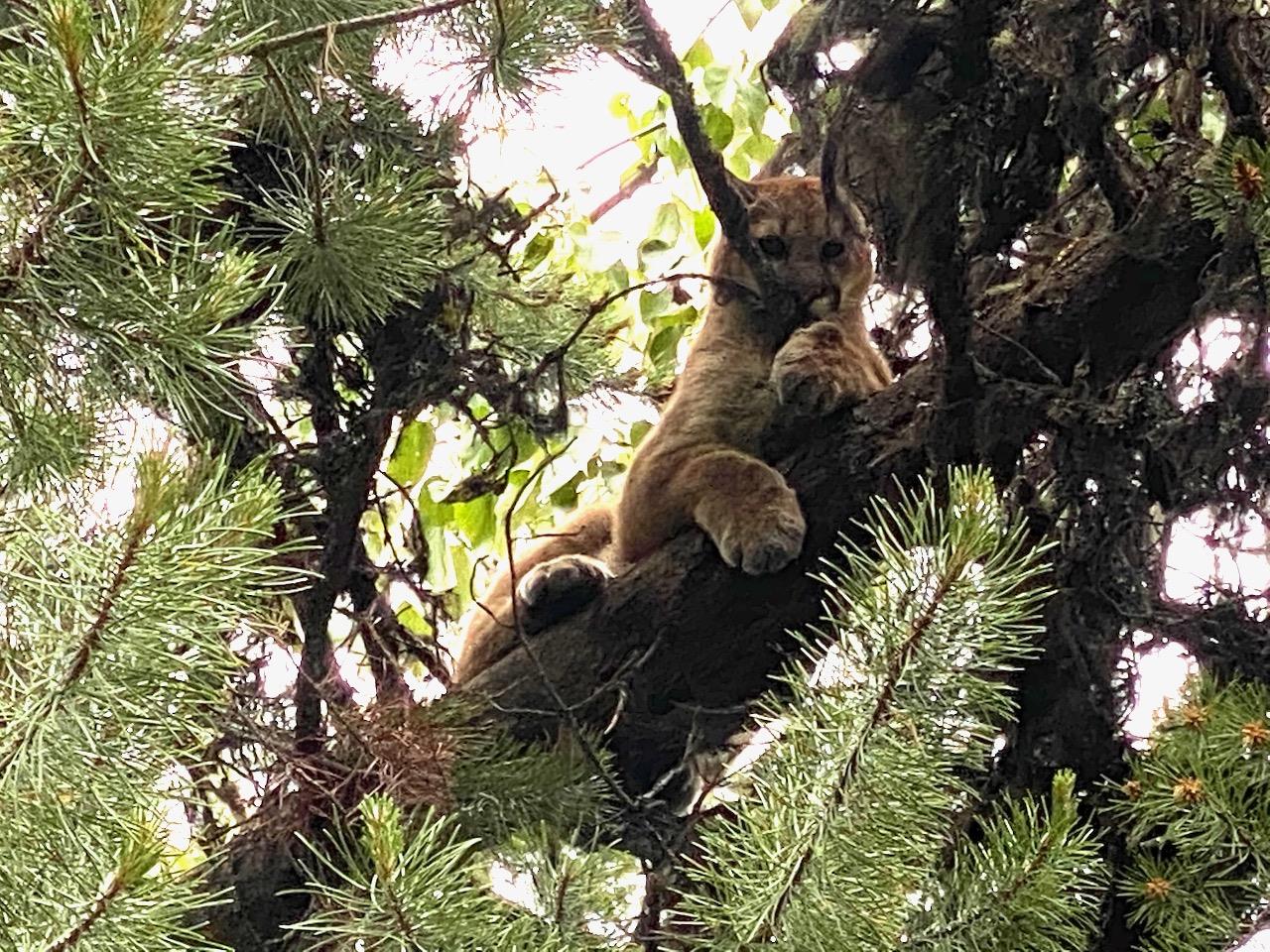Interactions between bears, wolves, and cougars are a popular topic of research and speculation in the West. A mountain lion would never win a battle over a kill with an adult bear or a pack of wolves, and indeed, in the North Fork Valley, cougars often get robbed of their kills. On the other hand, a subadult bear or solitary wolf might lose a battle over a kill with a cougar. Also, tracks and hunting camera videos in the area seem to show that cougars hunt with siblings or parents more than is commonly appreciated, giving them an advantage over a solitary wolf or bear.
Since our immediate area receives 10-15 ft of snow in the winter, whitetail deer who graze around our inn in the summer tend to migrate south toward Columbia Falls in the winter, where movement is much easier in the shallower snows. Mountain lions tend to follow the deer, which often causes awkward encounters between mountain lions and people around the edge of Columbia Falls. Thus, lynx, coyotes and wolves tend to take over the midwinter predation in our immediate vicinity.
Mountain lion tracks are relatively easy to distinguish from wolf or lynx tracks in the snow. When looking at a track, I first try to draw an imaginary "X" through the middle of the track. If the "X" misses all the pads, the track is likely canine. If the track is wider than long, causing the "X" to transect the pads, the track is likely to be feline. Cats have retractable claws, of course, but in the slippery, sloped, conditions around our inn, it is not uncommon to see the cougar's or lynx's claws out in a track. Lynx tracks can rival cougar tracks in size but the toe pads are much less prominent and the furry foot of a lynx causes an "ice cream cone" shape with tracks in loose snow.
The mountain lion photos with this story were taken immediately behind our yard at Moss Mountain Inn in June 2020. I had cut down a dead white spruce and the trunk got hung up on another tree, leaving the trunk at a 45 degree angle. When checking on the tree a few days later to see if it had fallen more, I observed the backside of a large animal sleeping about 20 ft up. By time I walked around to the other side of the tree, the cougar had woken up and was staring down at me. I took a few photos but didn't feel I should linger. An hour later, it had turned around in the tree but was still resting. Sometime during the night, the cougar exited and left a big turd pile in our driveway.
Why would a cougar sleep just outside of our yard? Was it thinking about ambushing the whitetail deer that frequent our yard? Or did it feel our place offered safety from attack by other predators?

